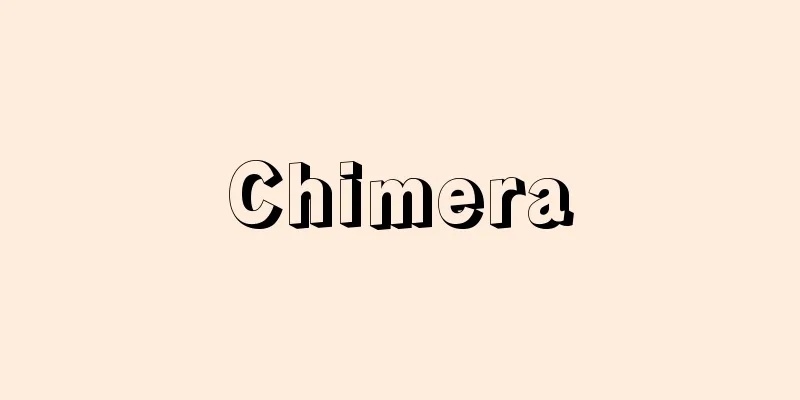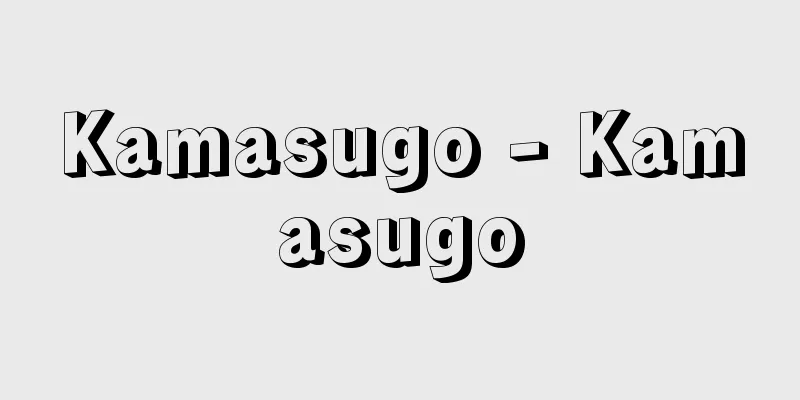Chimera

|
In biology, this refers to the phenomenon in which tissues with different genotypes are in contact with each other within the same individual. It is used especially for plants, but in the case of animals it is often called mosaic. The origin of the word chimera comes from the composite monster Chimaira that appears in Greek mythology. To create chimeras in plants, different species of plants are grafted together, then cut at the graft and allowed to sprout from the graft. This produces chimeras in which tissues derived from the scion (the bud or branch to be grafted) and tissues derived from the rootstock (the root to be grafted) are mixed in the sprout. There are various ways in which the tissues are mixed, including segmental chimeras in which one tissue is wedged into the center of the axis, peripheral chimeras in which one tissue is only present in the peripheral tissue surrounding the axis, and peripheral segmental chimeras in which both are combined. Experimentally, various chimeras have been created between tomato and nightshade. In addition to chimeras due to qualitative differences in genotype, there are also chimeras due to differences in the number of chromosomes, which are called chromosomal chimeras or mixed chromosomes. Chromosomal chimeras can be artificially created by treatment with colchicine (a type of alkaloid). In a broader sense, variegation and branch mutations (bud mutations) are also types of chimeras, and can result in varieties with high practical value. [Seiichi Yoshida] Source: Shogakukan Encyclopedia Nipponica About Encyclopedia Nipponica Information | Legend |
|
生物学で、同一個体のなかに遺伝子型の異なる組織が互いに接触して存在する現象をいう。とくに植物について用い、動物の場合はモザイクということが多い。キメラの語源はギリシア神話に登場する合成怪物キマイラChimairaによる。 植物でキメラをつくらせるには、異種の植物間で接木(つぎき)を行ってから、接木の部分でこれを切断し、そこから幼芽を出させる。そうすると芽の中に、接穂(ほ)(接ぐほうの芽や枝など)に由来する組織と台木(だいぎ)(接がれる根のほう)に由来する組織が混在するキメラが生ずる。混在の仕方はさまざまで、一方の組織が軸の中心部までくさび状に入り込んでいる区分キメラ、軸を取り巻く周辺組織にだけ一方の組織が存在する周縁キメラ、あるいはその両方が組み合わさった周縁区分キメラなどがある。実験的には、トマトとイヌホオズキの間でつくられた種々のキメラがある。 遺伝子型の質的違いによるキメラのほか、染色体数の相違によるキメラがあり、染色体キメラあるいは混数性などとよばれる。染色体キメラはコルヒチン(アルカロイドの一種)処理によって人工的につくることができる。 広義には、斑(ふ)入りや枝がわり(芽条突然変異)もキメラの一種で、実用価値の高い品種が得られる。 [吉田精一] 出典 小学館 日本大百科全書(ニッポニカ)日本大百科全書(ニッポニカ)について 情報 | 凡例 |
>>: Kimekomi dolls | Kimekomi dolls
Recommend
Zuarasiz
…In the decisive battle with Beles, Perun splits ...
Prince Umayado Toyotomimi - Prince Umayado Toyotomimi
…His birth year is listed as 574 in the Jōgū Shōt...
Masahira Oe - Masahira Oe
Year of death: 16 July 1012 (6 August 1012) Year o...
Freedom of residence and movement
The freedom to decide on one's place of reside...
Field Emission Microscope
… As an application of field emission, the electr...
Solaṅkī (English spelling)
…In particular, the dome ceiling of the open entr...
Mortgage - Mortgage (English spelling)
It is translated as a mortgage. It is a security ...
Allgemeiner Deutscher Arbeiterverein
…At the end of the 1950s, as political activity r...
Alexander, JW
…The idea of using group theory in algebra to s...
Treaty of Wedmore
At the time of his accession, most of the eastern...
Shogawa
A river that flows through the western part of Gif...
audible range (English)
…For example, the number of hair cells in cattail...
Polygordius pacificus
… [Minoru Imajima]. … *Some of the terminology th...
Obaba - Grandmother
…It is found in the East China Sea and south of c...
Okubo Iwami no Kami - Okubo Iwami no Kami
...He was the head of the daikan in the early Edo...









